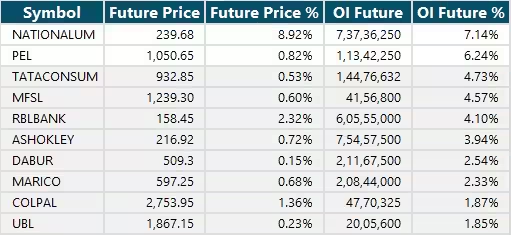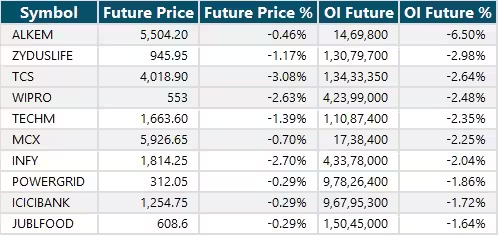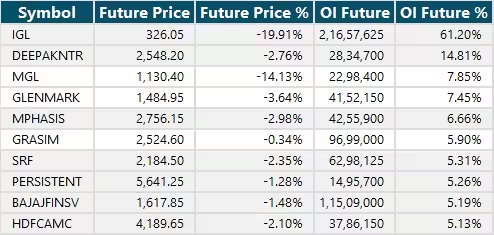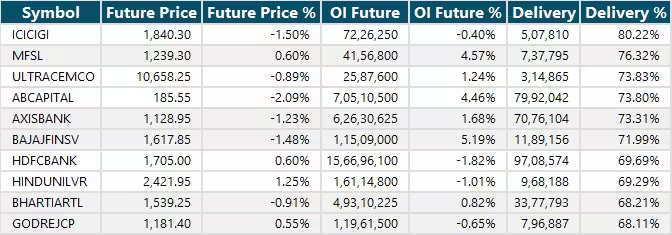19 Nov , 2024 By : Debdeep Gupta

Nifty Trade Setup
The market remained under pressure for seven consecutive days, falling below 23,500 and the 200-day Exponential Moving Average (DEMA) with a third of a percent loss on November 18. If the index sustains below 23,500, given the bearish sentiment and the lower highs-lower lows formation, the decline could extend to 23,200, which coincides with the 50-week EMA (Exponential Moving Average). On the upside, the 23,600-23,700 range could act as a resistance zone, according to experts. Until the index climbs and sustains above all key moving averages, the trend is likely to remain in favor of the bears.
Here are 15 data points we have collated to help you spot profitable trades:
1) Key Levels For The Nifty 50 (23,454)
Resistance based on pivot points: 23,568, 23,629, and 23,727
Support based on pivot points: 23,372, 23,312, and 23,214
Special Formation: The Nifty 50 formed a bearish candlestick pattern on the daily charts, following a Gravestone Doji pattern in the previous session, and continued to show a lower highs-lower lows formation, indicating weakness in the market. The momentum indicator RSI (Relative Strength Index) maintained a negative bias, though it reached oversold levels (28.60). The MACD (Moving Average Convergence Divergence) also indicated a negative trend on both the daily and weekly timeframes.
2) Key Levels For The Bank Nifty
Resistance based on pivot points: 50,437, 50,524, and 50,666
Support based on pivot points: 50,153, 50,065, and 49,923
Resistance based on Fibonacci retracement: 50,983, 51,643
Support based on Fibonacci retracement: 49,274, 47,866
Special Formation: The Bank Nifty remained within the range of last Wednesday and consistently defended the 200 DEMA (49,910) for the third consecutive session, which is a positive sign. However, the momentum indicator MACD is still in sell mode on both the daily and weekly timeframes, indicating a bearish trend in the short term. Meanwhile, the RSI remained below the 50 mark on both the daily and weekly charts, signaling weakness.
3) Nifty Call Options Data
According to the weekly options data, the 24,000 strike holds the maximum Call open interest (with 88.11 lakh contracts). This level can act as a key resistance level for the Nifty in the short term. It was followed by the 24,500 strike (70.09 lakh contracts), and the 23,500 strike (60.7 lakh contracts).
Maximum Call writing was observed at the 24,000 strike, which saw an addition of 43.31 lakh contracts, followed by the 23,500 and 23,700 strikes, which added 35.98 lakh and 32.35 lakh contracts, respectively. There was hardly any Call unwinding seen.
4) Nifty Put Options Data
On the Put side, the maximum open interest was seen at the 23,000 strike (with 63.19 lakh contracts), which can act as a key support level for the Nifty. It was followed by the 23,500 strike (50.72 lakh contracts), and the 23,200 strike (43.62 lakh contracts).
The maximum Put writing was placed at the 23,200 strike, which saw an addition of 31.4 lakh contracts, followed by the 23,000, and 23,400 strikes, with 28.32 lakh, and 23.1 lakh contracts added, respectively, while the maximum Put unwinding was seen at the 23,600 strike, which shed 3.15 lakh contracts, followed by the 23,700 and 23,800 strikes which shed 1.37 lakh and 1.24 lakh contracts, respectively.
5) Bank Nifty Call Options Data
According to the monthly options data, the 52,000 strike holds the maximum Call open interest, with 19.4 lakh contracts. This can act as a key resistance level for the index in the short term. It was followed by the 51,000 strike (16.35 lakh contracts) and the 51,500 strike (14.33 lakh contracts).
Maximum Call writing was visible at the 50,400 strike (with the addition of 2.07 lakh contracts), followed by the 51,000 strike (1.93 lakh contracts) and the 52,000 strike (1.53 lakh contracts), while the maximum Call unwinding was seen at the 50,100 strike, which shed 34,260 contracts, followed by the 51,100 and 50,900 strikes, which shed 22,305 and 16,350 contracts, respectively.
6) Bank Nifty Put Options Data
On the Put side, the maximum open interest was seen at the 49,500 strike (with 19.13 lakh contracts), which can act as a key support level for the index. This was followed by the 50,000 strike (16.86 lakh contracts) and the 49,000 strike (12.52 lakh contracts).
The maximum Put writing was observed at the 50,000 strike (which added 2.19 lakh contracts), followed by the 50,300 strike (2.03 lakh contracts) and the 49,000 strike (1.9 lakh contracts), while the maximum Put unwinding was seen at the 51,000 strike, which shed 80,640 contracts, followed by the 50,700 and 50,800 strikes, which shed 27,765 and 24,915 contracts, respectively.
7) Funds Flow (Rs crore)

8) Put-Call Ratio
The Nifty Put-Call ratio (PCR), which indicates the mood of the market, fell to 0.85 on November 18, from the 0.88 level in the previous session.
The increasing PCR, or being higher than 0.7 or surpassing 1, means traders are selling more Put options than Call options, which generally indicates the firming up of a bullish sentiment in the market. If the ratio falls below 0.7 or moves towards 0.5, then it indicates selling in Calls is higher than selling in Puts, reflecting a bearish mood in the market.
9) India VIX
Volatility increased after a day of decline and remained at higher levels, signaling caution for the bulls. The India VIX, the fear indicator, rose by 2.66 percent to 15.17, from 14.78 levels.
10) Long Build-up (29 Stocks)
A long build-up was seen in 29 stocks. An increase in open interest (OI) and price indicates a build-up of long positions.

11) Long Unwinding (37 Stocks)
37 stocks saw a decline in open interest (OI) along with a fall in price, indicating long unwinding.

12) Short Build-up (71 Stocks)
71 stocks saw an increase in OI along with a fall in price, indicating a build-up of short positions.

13) Short-Covering (43 Stocks)
43 stocks saw short-covering, meaning a decrease in OI, along with a price increase.

14) High Delivery Trades
Here are the stocks that saw a high share of delivery trades. A high share of delivery reflects investing (as opposed to trading) interest in a stock.

15) Stocks Under F&O Ban
Securities banned under the F&O segment include companies where derivative contracts cross 95 percent of the market-wide position limit.
Stocks added to F&O ban: Nil
Stocks retained in F&O ban: Aarti Industries, Aditya Birla Fashion & Retail, GNFC, Granules India, Hindustan Copper
Stocks removed from F&O ban: Nil
0 Comment